Life on hold Gender-affirming care delayed means true selfhood denied
Read this article for free:
or
Already have an account? Log in here »
To continue reading, please subscribe:
Monthly Digital Subscription
$1 per week for 24 weeks*
- Enjoy unlimited reading on winnipegfreepress.com
- Read the E-Edition, our digital replica newspaper
- Access News Break, our award-winning app
- Play interactive puzzles
*Billed as $4.00 plus GST every four weeks. After 24 weeks, price increases to the regular rate of $19.00 plus GST every four weeks. Offer available to new and qualified returning subscribers only. Cancel any time.
Monthly Digital Subscription
$4.75/week*
- Enjoy unlimited reading on winnipegfreepress.com
- Read the E-Edition, our digital replica newspaper
- Access News Break, our award-winning app
- Play interactive puzzles
*Billed as $19 plus GST every four weeks. Cancel any time.
To continue reading, please subscribe:
Add Free Press access to your Brandon Sun subscription for only an additional
$1 for the first 4 weeks*
*Your next subscription payment will increase by $1.00 and you will be charged $16.99 plus GST for four weeks. After four weeks, your payment will increase to $23.99 plus GST every four weeks.
Read unlimited articles for free today:
or
Already have an account? Log in here »
Hey there, time traveller!
This article was published 01/03/2024 (603 days ago), so information in it may no longer be current.
Adam Donaghy is looking forward to a lot of things: travelling to Spain with an international exchange program, graduating from high school and pursuing a career as a sign language interpreter.
He’s also looking forward to the day he can finally access gender-affirming health care. The 16-year-old is transgender, meaning his gender identity does not correspond to the sex assigned to him at birth.
He came out at 12 years old and has spent the last four years in medical limbo, stuck on waiting lists while experiencing worsening gender dysphoria as puberty progressed unabated.
“It’s unfair,” Donaghy says. “I have to develop a body that I didn’t want, and then I’m gonna have to start all over and develop the body that I do want.”
Silenced Symptoms
Downplayed. Dismissed. Devalued.
In this monthly Free Press series, we explore underdiagnosed, underrecognized and marginalized health issues affecting the lives of women, nonbinary and trans people.
We share stories and lived experiences, while also raising awareness.
While provincial funding for gender-affirming health services has never been higher in Manitoba, the opaque system remains plagued by bottlenecks, red tape, lack of permanent funding and knowledge gaps among medical providers — the consequences of which can be deadly.
Work is underway to remove the extra layers of mandatory referrals for some gender-affirming surgeries that aren’t needed for other types of surgeries covered by Manitoba Health. Piecemeal gains in trans health care have moved Manitoba forward, even as U.S.-style anti-trans political movements gain ground.
Now, the provincial government is emphatically supportive of trans rights and gender-affirming health care. But the community needs to see more action.
When Donaghy came out, his mom, Jill Chapman, sought advice from other parents of trans kids, joined a local support group and spent countless hours online researching treatment options.
It was easy to adjust to her son’s new name and pronouns. The next steps of his transition were less straightforward.
“We’re kind of cobbling together this care plan,” she says. “And not really knowing if we’re doing it right or if there’s another avenue we could pursue.”
While the family’s pediatrician was “tremendously supportive” of Donaghy’s transition, the doctor didn’t feel comfortable initiating treatment and instead made a referral to the Gender Diversity and Affirming Action for Youth (GDAAY) program at the Health Sciences Centre Children’s Hospital.
The referral felt like a ray of hope. Once admitted, Donaghy would have access to a team of specialists who could create a tailor-made transition plan based on his goals and development.
MIKAELA MACKENZIE / FREE PRESS Adam Donaghy, 14,
That optimism, however, has faded to disappointment.
Aside from an intake package warning of a lengthy wait, the family has heard next to nothing from the program over the last four years.
“I’m completely in the dark,” Donaghy says. “One day I might get in, one day I might not.”
In the meantime, the soft-spoken, pragmatic teen has focused on transitioning socially. He’s changed his name and pronouns at school and work, has learned how to use a binder — a compression garment designed to flatten the chest — and has turned to social media for tips on lowering his voice.
So far, the only medical intervention Donaghy has received is a prescription for birth control to stop menstruation. It’s an imperfect solution with myriad physical and hormonal side effects.
The family’s experience is not uncommon, according to Dr. Megan Cooney, a pediatrician and adolescent medical specialist who’s been working with the GDAAY clinic since 2019.
“Unfortunately, for folks who would have been referred over a year ago, that absolutely would’ve been the norm,” Cooney says of the long wait and lack of communication. “Now, with our additional funding, (our hope) is that it will allow us to see more individuals than we have been able to in the past.”
Despite being founded in 2012, GDAAY only began receiving formal provincial funding last year, through the now-defunct Diagnostic and Surgical Recovery Task Force launched by the former Progressive Conservative government. The temporary $700,000 investment over two years has allowed the program to hire dedicated staff for the first time.
The provincial NDP government hasn’t promised permanent funding to GDAAY, nor has it made any specific funding announcements for trans health. But Health Minister Uzoma Asagwara says they’ll support it.
“Our government is committed to continuing to support GDAAY and to, again, work with other organizations to see how we can best strengthen gender-affirming health care in Manitoba,” Asagwara says.
As of November, GDAAY had 200 patients actively receiving treatment and another 69 on the waitlist.
“Gender-affirming care is life-saving.”–Dr. Megan Cooney
Several years ago, in light of a growing waitlist and lack of resources, the program also suspended intakes for new clients aged 14 and older. The move has created a two-year gap in care for teens who are not yet eligible for the adult Trans Health program at Klinic Community Health, which provides services for those over 16.
The GDAAY clinic is hoping to address the gap with its current funding. Time is of the essence.
“Gender-affirming care is life-saving,” Cooney says. “Not having access to it and not being in an environment that is supportive is associated with depression, anxiety, eating disorders, substance use, self-harm and suicidal ideation. The stakes are very high.”
Adam Donaghy did not get into the GDAAY program. Last fall, several months prior to his 16th birthday, he received a letter advising that he had been moved onto the waiting list at Klinic. Again, the family has had little communication with the new medical centre.
“We went from one black hole to another black hole,” mom Jill Chapman says.
MIKAELA MACKENZIE / FREE PRESS Adam Donaghy (with his mom, Jill Chapman) is a trans teen who has been on the waiting list for HSC’s Gender Diversity and Affirming Action for Youth program for more than four years.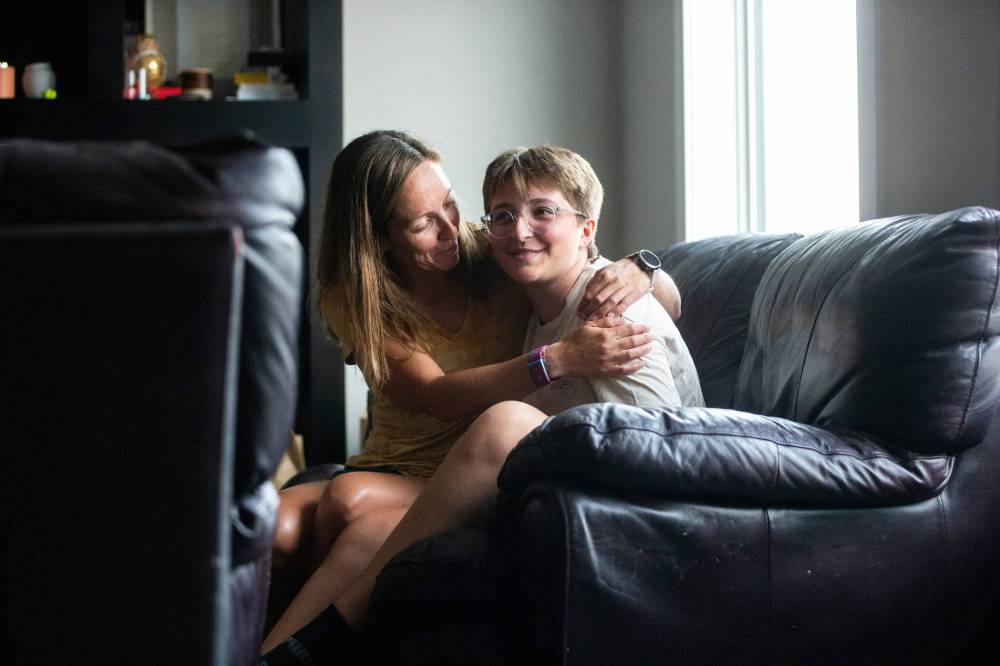
After years of waiting, the family is considering seeking hormone therapy for Donaghy elsewhere in Canada. It’s a step that would involve extensive travel and out-of-pocket costs, but it’s one Chapman is willing to take for her son’s well-being.
“If we had gotten the appropriate help, we could’ve put a stick in the spokes of puberty … that ship has sailed,” Chapman says. “Having to go through puberty has caused him tremendous dysphoria; that’s been really, really challenging.”
Donaghy is coping with the situation by tempering his expectations. While he’s still looking forward to a lot of things, it’s difficult to plan ahead with so many unknowns.
“It has been a huge thing that has plotted out my future,” he says of his medical transition. “I think about university and testosterone, surgery and my future career — everything has a piece of being trans to go along with it.”
Every week, about 25 new patient referrals come into Klinic’s Trans Health Program, and hundreds are still waiting to get in. Despite progress to shorten waitlists, patient volumes have snowballed to the point that patients are now waiting nearly a year for their first intake appointment and up to two years to see the program’s sole psychologist.
Since around 2009, Klinic has received provincial funding to provide gender-affirming care with an in-house physician, a registered nurse, a full-time psychologist, a nurse practitioner, a social worker and a peer support worker. Two years of additional funding — $490,000, announced via the task force last year — allowed the program to operate five days a week instead of just 2.5 days and meant some positions were doubled in an effort to clear lengthy pandemic backlogs.
The program has become a gateway to gender-affirming surgery for older teens and adults in Manitoba, but as the need expands, leadership doesn’t want to see the specialized program function as a gatekeeper.
“If we could just go away and everybody could access the gender-affirming care they need everywhere else, closer to home, that’s really ideal,” says Klinic executive director Ayn Wilcox.
But Manitoba is a long way from that goal. There were about 400 patients waiting for an intake appointment as of late February. Those still on the intake list have been waiting since April or May 2023 — program staff have been able to cut the wait time down to about 10 months.
“If we could just go away and everybody could access the gender-affirming care they need everywhere else, closer to home, that’s really ideal.”–Klinic executive director Ayn Wilcox
The program is currently carrying about 2,000 patients, including patients who are stable on hormone therapy but don’t necessarily have a safe primary-care provider to go back to.
Because of the demand, the layers of requirements and the relatively small number of providers offering gender-affirming care, the system is prone to disruption.
Last year, one of the few plastic surgeons in Manitoba offering insured gender-affirming procedures retired abruptly, leaving the trans health clinic and those on the waiting list scrambling to find an alternative.
About 100 patient consultations destined for that surgeon’s office were instead sent back to Klinic; those patients had already been waiting more than a year, if not two or three, for their surgery consult.
By September, another plastic surgeon filled in. To speed things up, Klinic’s trans health team took on unprecedented responsibilities to help book surgeries and arrange patients’ pre- and post-op care, work that Klinic is continuing to do without any additional resources.
As of mid-February, the backlog caused by a single retirement was cut in half. About 50 of those 100 patients have had their surgeries.
Shay Kleisinger found out about the retirement while trying to book a revision for the top surgery that had been performed two years prior.
“To be this far down the line and then all of a sudden have access to care completely cut off was very, very scary,” says Kleisinger, whose pronouns are they and she.
MIKAELA MACKENZIE / FREE PRESS For Shay Kleisinger, the route to access top surgery was a multi-year process with many steps involved.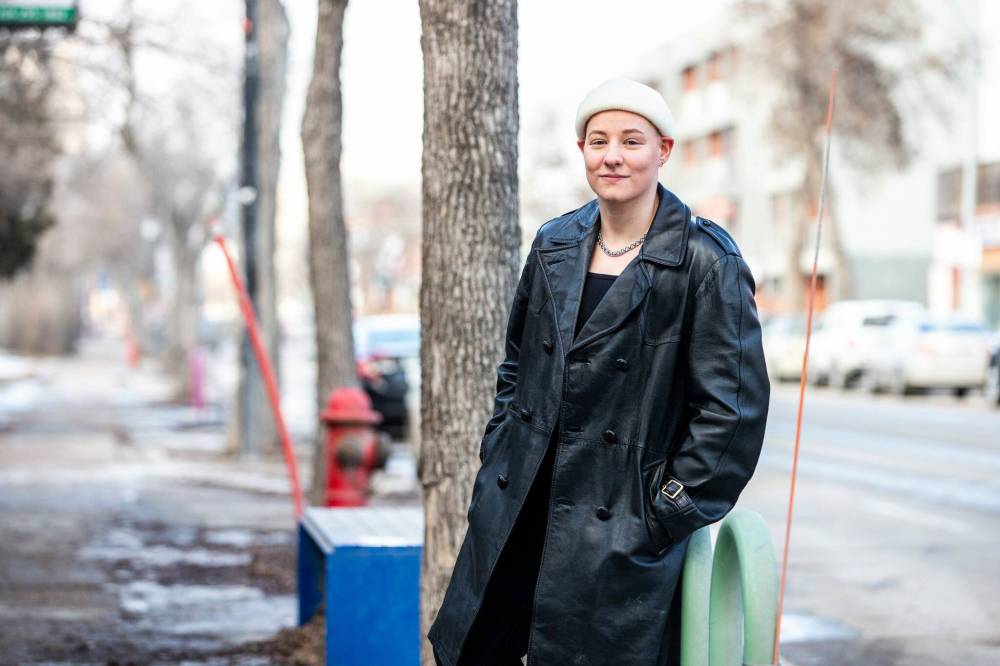
The 26-year-old engineer is well-acquainted with the lengthy process. While their overall experience was positive, it took two years and eight different appointments with various practitioners to receive a double mastectomy — often referred to as top surgery — covered by Manitoba Health. Still, their journey was faster than most.
Kleisinger is trans and non-binary, meaning they don’t present themselves as exclusively male or female. Their first meeting with a social worker after registering with Klinic’s Trans Health program in 2019 was nerve-racking, since they were seeking top surgery, but didn’t want hormone replacement therapy (HRT). Previously, trans Manitobans had to be on estrogen or testosterone for one year to qualify for surgery referral.
“I was very nervous to say the wrong thing,” Kleisinger says, adding that they were advised by others who had gone through the process to lie about their gender identity in order to access care. “That felt uncomfortable for me, because I would never want to lie about that.”
The advice proved incorrect and Kleisinger’s timeline was condensed without the need for HRT. They received the required referrals and had a meeting with their chosen surgeon in late 2020. The biggest hurdle was finding a family doctor to conduct a pre-op physical at the height of the pandemic — something that was eventually managed through a walk-in clinic. Kleisinger had top surgery in May 2021 and was off work for five weeks of recovery.
MIKAELA MACKENZIE / FREE PRESS Shay Kleisinger, 26, had to navigate misinformation and mulitiple referrals to access the gender-affirming care they needed.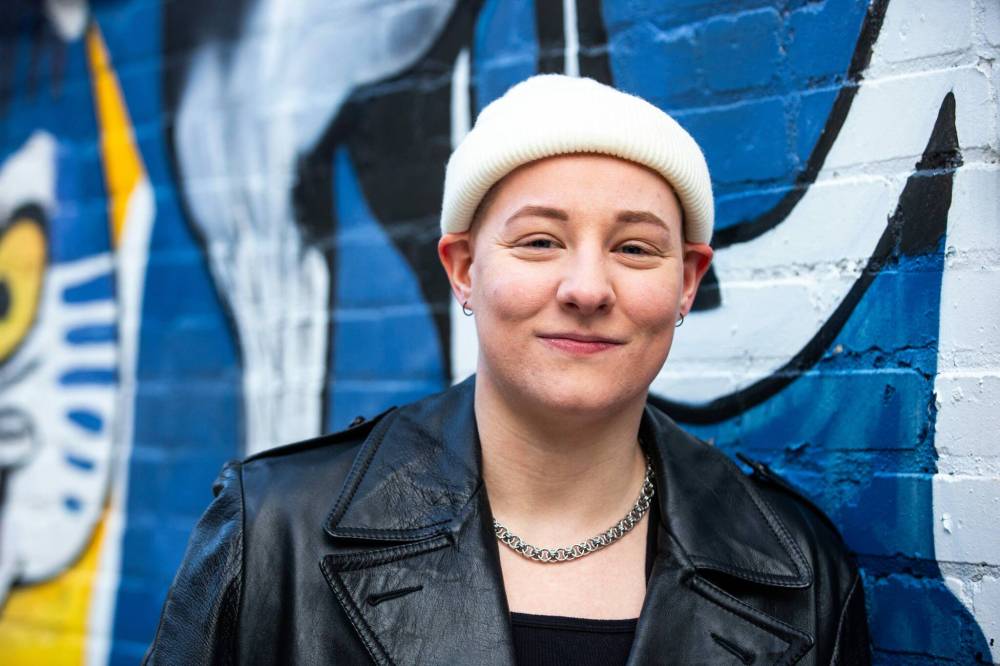
Despite having to get back on the surgery referral list at Klinic to take care of a minor revision, they’re thrilled with the effects of the procedure.
“I feel very settled in my identity and my body,” Kleisinger says. “When you’re experiencing gender dysphoria … you know what your body’s supposed to look like, but to actually see it and feel it are two different things.”
They’re also keen to share knowledge to help others avoid misinformation.
“It’s really hard to know what you’re getting yourself into until you access care,” Kleisinger says, between outlining the pros and cons of different top-surgery techniques, dispensing facts about nipple grafting and opining on the benefits of a body pillow during recovery.
“I’m really grateful to be one of those people that provides information because there’s still a disconnect. And it’s not Klinic’s fault, it’s just the process.”
Community knowledge-sharing has always been an unofficial part of Manitoba’s trans health-care system.
Thomas Wardell, a registered social worker, was also coached on what to say to doctors and psychologists when he began transitioning in the early 2010s.
“I was starting to get suicidal,” he says. “So in order to meet my needs, I had to lie to the professionals that were supposed to help me.”
At the time, diagnosis of gender dysphoria for surgery referrals focused on confirming whether or not a person was indeed transgender, based on narrow parameters.
That approach has shifted among mental-health practitioners, says Wardell, who now assists with these kinds of assessments in his private practice at Wolseley Elm.
“It’s not to validate their identity,” he says of the evaluations. “Our goal is to make sure they know what it is they’re seeking and they know the possible risks and complications that can come from surgery.”
“Our goal is to make sure they know what it is they’re seeking and they know the possible risks and complications that can come from surgery.”–Thomas Wardell
Work is underway to remove Manitoba’s mandatory pre-surgery mental-health assessment altogether and rely on a single health provider’s referral instead of two referrals. (Some provinces have already scrapped that requirement following the latest international recommendations.)
For other types of surgery covered by Manitoba Health, only one doctor referral is needed. For gender-affirming surgeries, Manitoba has two approved provider lists, which have been shrouded in some secrecy. There’s a list of approved gender-affirming-care physicians, now published online by the College of Physicians and Surgeons. And there’s a list of approved mental-health assessors.
As long as a provider is on both lists, some Manitoba surgery recipients referred through Klinic need only one referral and can skip the additional mental-health assessment.
“The evidence is very clear that having that additional mental-health assessor doesn’t add any value to the process. All it does, in fact, is cause more harm and more delay because of this psychological impact of having to see a mental-health professional to determine that you’re appropriate for this care,” says Ayn Wilcox, executive director of Klinic Community Health.
Wilcox says Klinic is still working with the provincial government and with Shared Health to eliminate the need for a mental-health screening on top of a physician’s referral for surgery.
“I think we’ve got lots of support from Shared Health for the recommendations, because they are evidence-based,” Wilcox says.
“We’re talking about necessary mental-health and medical intervention, including suicide prevention.”–Julie Henderson
Jule Henderson is a clinical psychologist at Wolseley Elm who has been working with transgender patients and conducting surgery-readiness assessments since the early 2000s.
She’s seen demand for gender-affirming counselling and referrals increase at her practice over the last two decades, owing to provincial coverage making treatment more financially accessible.
At the same time, she’s watched clients struggle in the face of long waitlists.
“We’re talking about necessary mental-health and medical intervention, including suicide prevention,” Henderson says.
She would like to see more funding for trans health programs, more mental-health assessors added to the approved provider list and more family doctors taking a bigger role in referrals.
“Doctors can refer somebody for any kind of surgery — why would that be different for this surgery?” she says. “We need to educate physicians and other health-care providers about Canadian and World Health Standards of Care to refer for gender-affirming medical interventions.”
It’s a sentiment echoed by many health professionals who spoke with the Free Press.
The bottleneck squeezing timely access to gender-affirming care in Manitoba remains in place largely because of the overall shortage of family doctors and a lack of general practitioners comfortable or qualified in prescribing hormone therapy and gender-affirming medical treatments.
Last year, for the first time, gender-affirming care became a mandatory part of the curriculum in the University of Manitoba’s Family Medicine Residency program.
“In theory, every family doctor going forward (who’s graduating) should be able to provide gender-affirming care within their own practice,” says Dr. Rob Obara, a family physician who works in Klinic’s Trans Health program. “We are just struggling to catch up everyone else that’s currently practising.”
MIKAELA MACKENZIE / FREE PRESS Dr. Rob Obara, a family physician with Klinic’s trans health program, hopes to educate the next generation of doctors so they can be comfortable offering gender-affirming care.
Second-year medical students enrolled at U of M also typically receive a two-hour lecture on the topic. Although Obara is a busy clinician whose primary focus is not on education, he has been giving the lectures for about eight years, on and off.
The “basic knowledge” level education on medical management for trans patients has been included in the curriculum for years now, “but that’s not enough to make someone comfortable in prescribing,” Obara says. “It’s really extremely minimal.”
Properly prescribing testosterone, estrogen and androgen blockers requires specific knowledge and training, and dosing information is not readily available in routinely used medical guides.
“The average family doctor who has never prescribed hormones before would have to do some research and digging in order to safely prescribe, so it does require care.”–Dr. Rob Obara
“The average family doctor who has never prescribed hormones before would have to do some research and digging in order to safely prescribe, so it does require care,” he says. “And another layer to it is that no two trans clients are exactly the same.”
Klinic offers training and job shadowing for practising doctors and nurse practitioners who want to learn how to provide gender-affirming care. But taking a day off to spend in the trans health clinic, especially when doctors rely on a fee-for-service payment model, can be a big ask.
Still, education is progressing in the right direction, Obara says, and doctors who object to providing gender-affirming care are the exception.
“We have had a handful of providers, for different reasons, tell us that they weren’t comfortable doing trans care for some of our clients, but the large majority are comfortable, they just may not know exact ins and outs of prescribing and monitoring.”
Improved medical expertise, funding and access can only go so far, says Holly Williams, a Winnipeg trans woman.
“It’s extremely beneficial, but we still live in a world that makes it so difficult to just exist and just be happy as ourselves,” she says. “That transphobia, that stigma, that bigotry, it forces some trans people to stay in the closet to continue living in that perpetual hell.”
MIKAELA MACKENZIE / FREE PRESS Holly Williams, a trans woman, has paid thousands of dollars out of pocket to access gender-affirming surgeries in the United States, owing to long waitlists in Manitoba.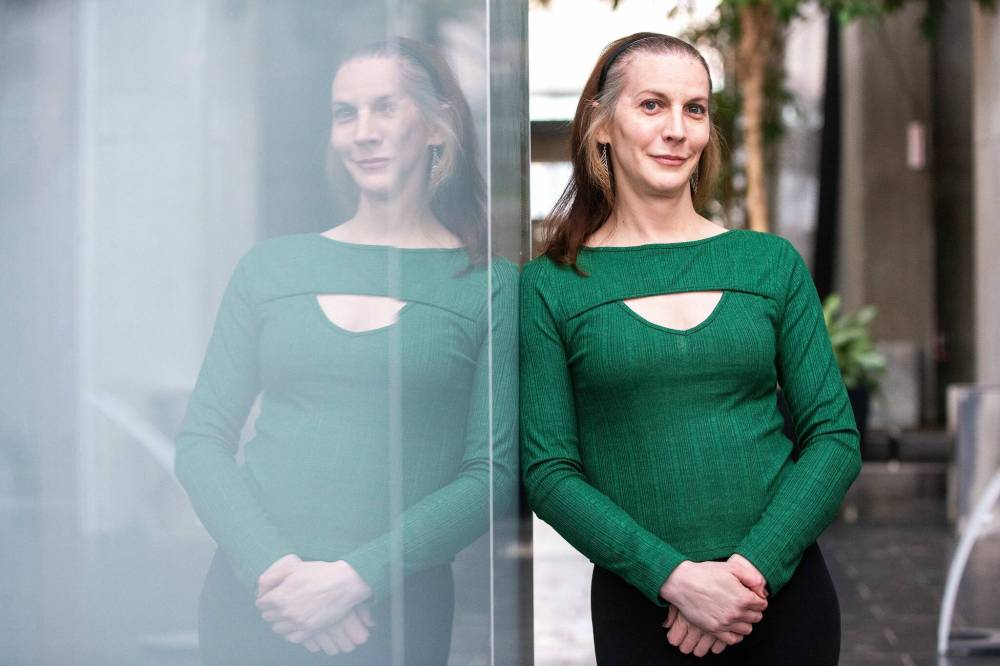
Williams, 42, started her medical transition in 2014. At the time, she was resistant to starting hormone therapy due to internalized transphobia. Growing up in a religious household and seeing trans people villainized and mocked in popular media made it difficult to accept her identity.
“I grew up believing myself to be a fairly regular guy, it’s just that I was extremely miserable as a guy,” she says. “Finding out that I might be trans essentially blew my mind.”
Transitioning became a “last-ditch effort” to keep herself alive. Her gender dysphoria has been eased by years of therapy and dozens of costly facial and physical feminization procedures, most of which she pursued out-of-province and in the United States, owing to long local waiting lists. Since coming out, Williams has also found support and acceptance from her parents, friends and most family members.
Still, she struggles with her mental health. Williams hasn’t spoken to one of her siblings in a decade, and the rise of transphobic rhetoric socially and politically has been hard to cope with.
MIKAELA MACKENZIE / FREE PRESS “It’s hard to stay positive when everything about my existence is debated and I am othered,” says Holly Williams.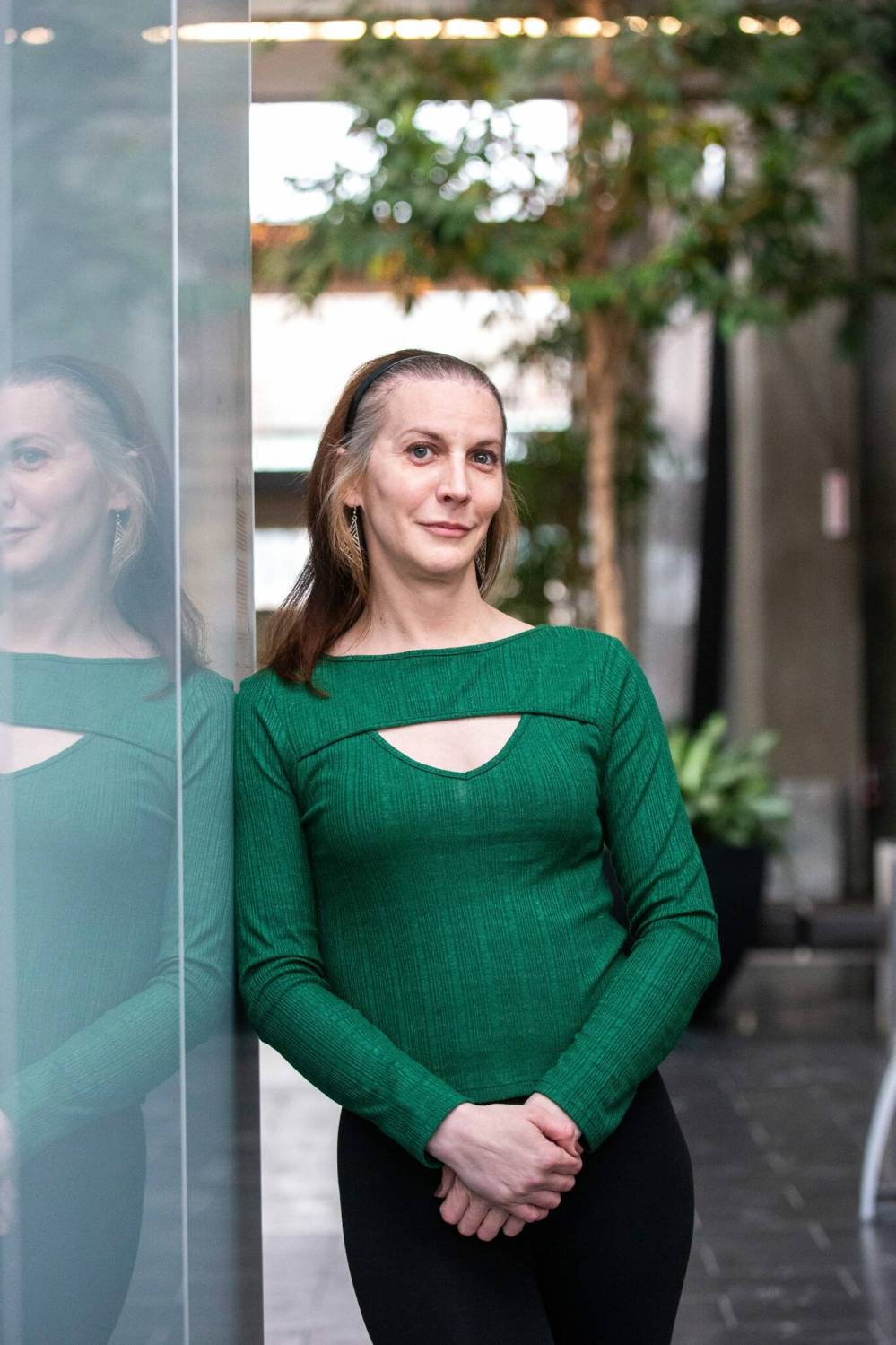
“Transitioning doesn’t magically make people accept you. I am incredibly happy with my journey and have a tremendous support network but despite this, it’s hard to stay positive when everything about my existence is debated and I am othered,” she says. “It’s really hard to see the light when you’re surrounded by so much hate.”
“On the flip side, there is more awareness, there is more acceptance,” Williams adds. “But I don’t think it’s happening as quickly as it needs to be, or has come as far as it needs to.”
Amid transphobic political movements in the U.S., Alberta, and closer to home — including the rise of anti-trans hate framed as “parental rights” — Manitoba’s health minister and health professionals who provide gender-affirming care say they’re focused on uplifting the trans community and ensuring wider access to health care for all Manitobans.
“The government of today is a government that respects all Manitobans, and that will stand up for trans kids and their families, and that will focus on bringing Manitobans together around the common understanding that every single person is invaluable and deserves to be respected and celebrated and affirmed for who they are in our communities,” Minister Asagwara says.
Hateful movements are stoking a lot of fear, says Haran Vijayanathan, community health and wellness director of Klinic’s Trans Health program. Vijayanathan says it’s important for Manitobans to know teams of health professionals are consistently working on improving trans health care, not on neglecting it or scaling back access.
“We have no interest or intention in going backwards.”
katie.may@winnipegfreepress.com
eva.wasney@winnipegfreepress.com
Process for Access
Gender dysphoria is a condition in which a person’s identity doesn’t match the gender they were assigned at birth based on physical sex indicators. If left untreated, gender dysphoria can negatively affect mental health. While Manitoba requires a diagnosis of gender dysphoria in order for the province to cover the cost of gender-affirming treatments, advocates want to see gender dysphoria treated as a medical condition, rather than as a mental-health disorder.
Gender-affirming health care refers to a wide array of medical and/or surgical procedures. It can range from a doctor using a patient’s chosen name and pronouns during appointments and offering judgment-free clinical advice, to providing hormone medication and referrals for surgery.
Some treatments are reversible or partially reversible. Gender-affirming care includes hair removal, voice training, and surgeries such as breast reductions or implants, chest masculinization, facial feminization and genital surgeries. Not all gender-affirming care is covered by Manitoba Health. Genital surgeries are covered, but they are performed out of province and still require a double layer of referrals.
Youth
Transgender and non-binary youth aged eight to 16 years old can access mental health and medical care through the Gender Diversity and Affirmative Action for Youth (GDAAY) program at the Children’s Hospital. Referrals must be made through a primary care provider.
Once accepted into the program, clients meet with a social worker to assess their goals and treatment options.
Youth who have not yet completed puberty are fast-tracked to a staff endocrinologist to determine if puberty blockers — hormone-suppressing medications designed to temporarily pause the physical changes associated with puberty — are appropriate. These patients are usually seen within four to six months.
Those who have progressed through puberty may have to wait two years or longer to see a mental-health provider for a hormone readiness assessment. Hormone replacement therapy (HRT) involves the prescribing of testosterone or estrogen to induce masculine or feminine secondary sex features — such as the development of facial hair or breast tissue — that align with a person’s experienced gender. These effects are partially reversible.
Readiness assessments for each therapeutic approach focus on psychological, medical and social history to ensure patients and families are making informed and appropriate transition decisions.
Adults
At Klinic’s Trans Health program for Manitobans 16 and older, the process begins with a registration, then the intake appointment with a social worker. A peer-support worker is usually on hand. The patient will be able to see a physician or a nurse. Depending on the patient’s needs, they’ll get bloodwork done and review a formal consent form, or start the process for a surgical referral.
Chest surgeries and some facial-feminization surgeries are performed by plastic surgeons in Manitoba. No Manitoba-based surgeons perform genital surgical procedures such as vaginoplasty, phalloplasty and metoidioplasty (reconstruction of the clitoris). Patients are typically sent to Quebec for those surgeries, which are covered by Manitoba Health, along with travel costs.
For chest surgeries, Klinic has been able to consolidate the requirements so that a separate mental-health assessment is not usually required.
Because of the shortage of family doctors, some Manitobans can’t turn to a general practitioner to get started on hormone therapy. They end up needing Klinic’s program earlier and staying on Klinic’s patient roster longer because they don’t have a family doctor, or don’t have one with expertise in prescribing hormones.
Patients on hormone therapy should be stabilized within six months and shouldn’t need the specialized program long-term. But that’s not what’s happening in practice. A message for health-care providers on Klinic’s website implores doctors to start hormone therapy for their patients instead of making them wait up to a year to get in to the Trans Health program. The statement reminds family doctors that hormone therapy is not a specialty, it’s within their scope of practice, and that not providing it for patients who need it can cause harm.

Eva Wasney is an award-winning journalist who approaches every story with curiosity and care.

Katie May is a multimedia producer for the Free Press.
Our newsroom depends on a growing audience of readers to power our journalism. If you are not a paid reader, please consider becoming a subscriber.
Our newsroom depends on its audience of readers to power our journalism. Thank you for your support.

